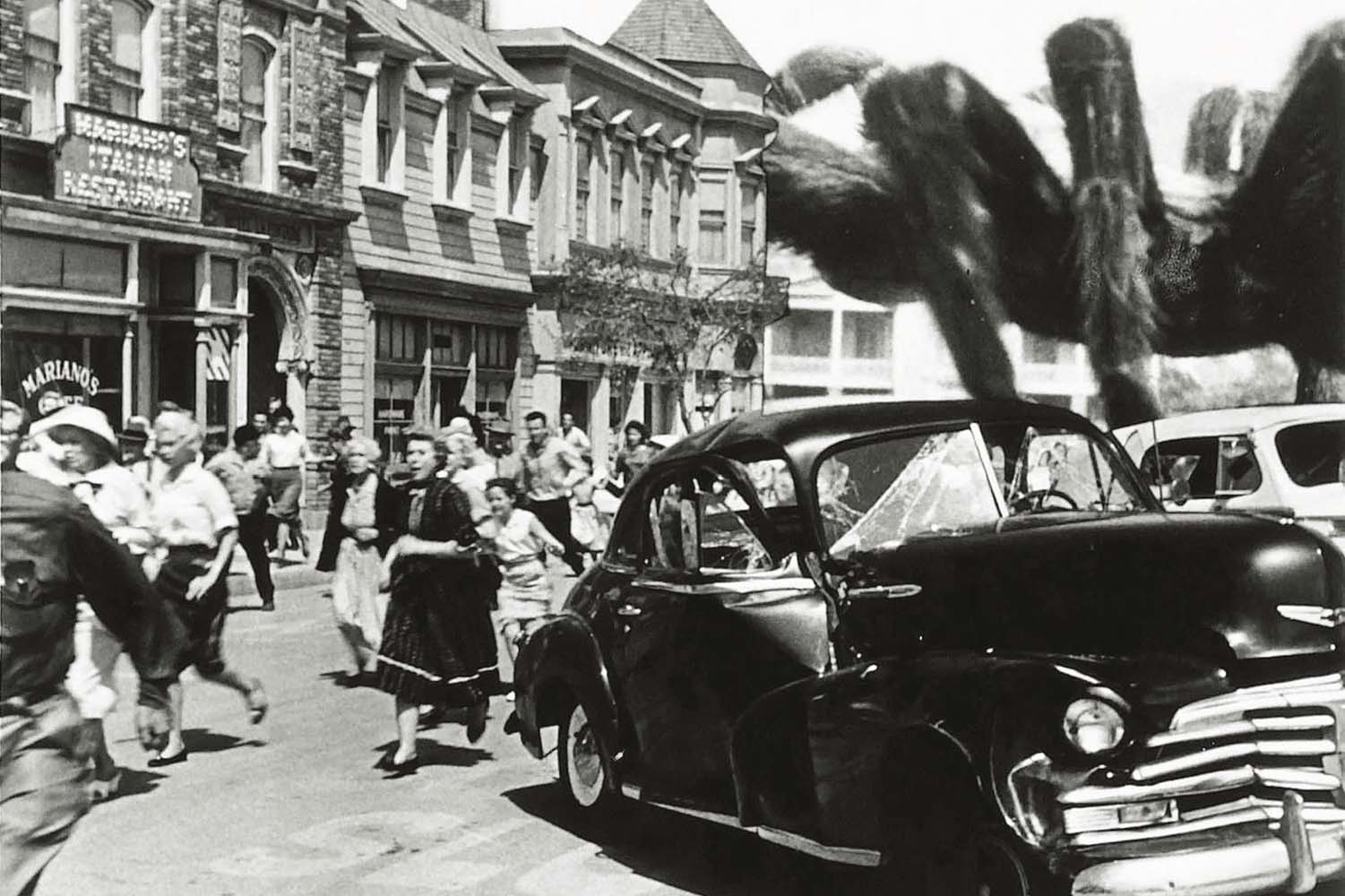GIANT ATOMIC BUGS, ANYONE? HERE’S THE FILM THAT STARTED IT ALL.
A sergeant with the New Mexico State Police, Ben Peterson (James Whitmore), discovers a dazed little girl wandering in the desert near the site of the first atomic bomb test in Alamogordo. Almost catatonic with shock, she is apparently the sole survivor of a violent attack on her family’s vacation trailer. Nearby, the proprietor of a similarly destroyed general store is found dead, an autopsy revealing that he was the victim of a lethal amount of formic acid, which had somehow been pumped into his body. An unusual animal track found in the area is examined by a pair of Department of Agriculture scientists, Dr. Harold Medford (Edmund Gwenn) and his daughter, Dr. Patricia Medford (Joan Weldon). On a hunch, they expose the traumatized girl to the smell of formic acid, and she reacts violently, screaming, “Them! Them!” Formic acid, the researchers know, is the main component of ant venom. Given the huge size of the strange track, they realize they are likely dealing with an eight-foot-long monster ant, a mutation caused by the radiation from atomic testing.
Their suspicions are confirmed during a trip to the desert with FBI agent Robert Graham (James Arness), where they encounter exactly the kind of ant they had hypothesized. The elder Medford instructs Graham and Peterson to disable the creature by shooting off its antennae, then kill it with machine gun fire. A helicopter crew discovers a giant anthill into which cyanide gas bombs are thrown, wiping out the colony. However, there is evidence that two recently hatched queen ants have escaped, with the potential to reproduce their species exponentially.
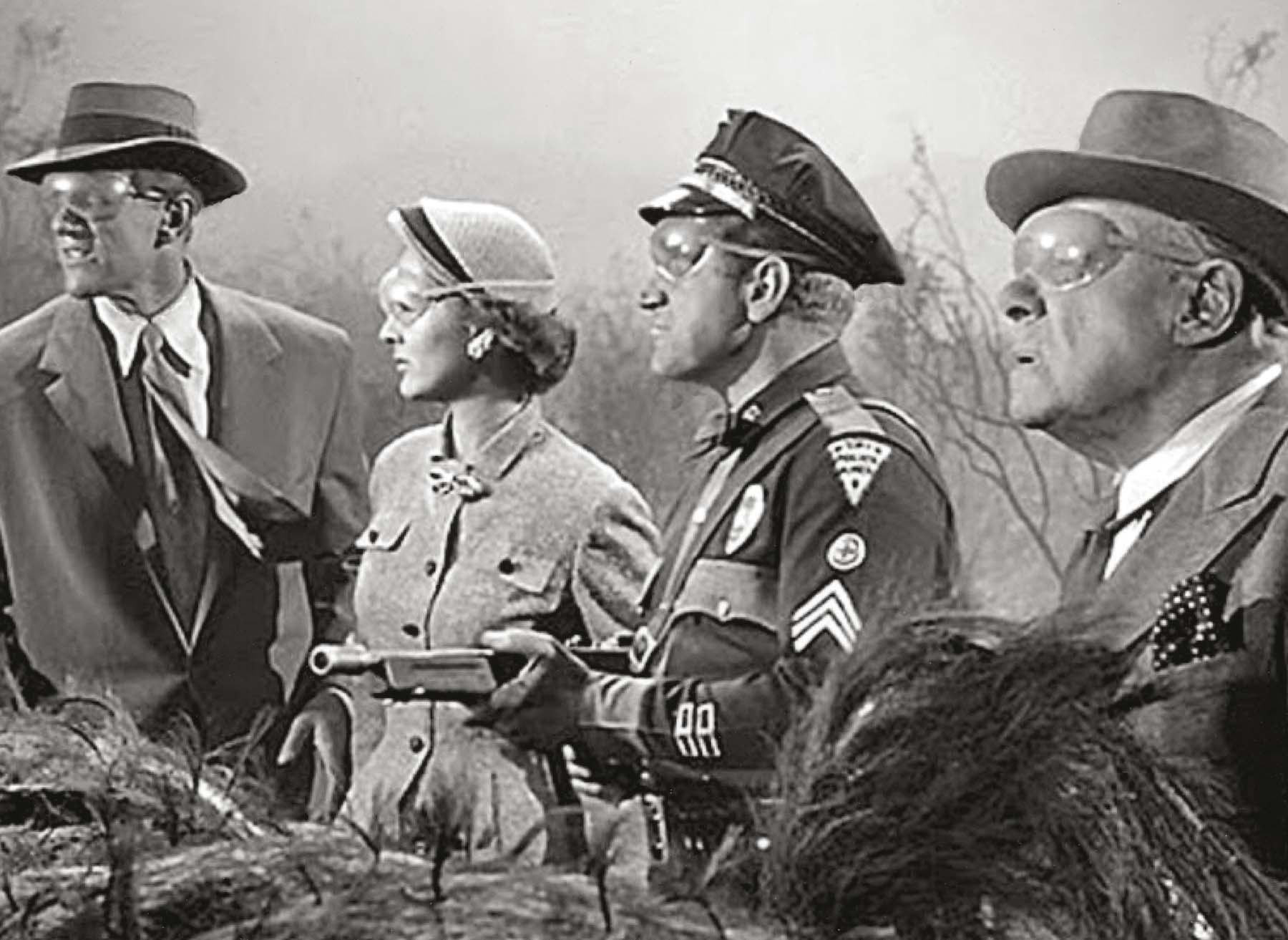
James Arness, Joan Weldon, James Whitmore, and Edmund Gwenn
When a queen begins to reproduce in the hold of a freighter in the Pacific, the ship is summarily sunk by the military. Meanwhile, the authorities follow the trail of the remaining queen to Los Angeles, where the sprawling storm drain system of the dry Los Angeles River provides a ready-made nest for the giant ants. An exciting race against the clock ensues. Will the new nest hatch another queen? Will two young boys trapped by the ants be able to escape? Has the Atomic Age taught humanity any new lessons?
First envisioned as a large-budget film shot in color and 3-D, the initial treatment of Them! by George Worthing Yates imagined giant ants colonizing the New York City subway system. It would have been impossibly expensive to realize, and the setting was changed to the far more manageable landscape of Los Angeles, where a vast system of storm drains provided a perfectly functional substitute that could be had on the cheap.
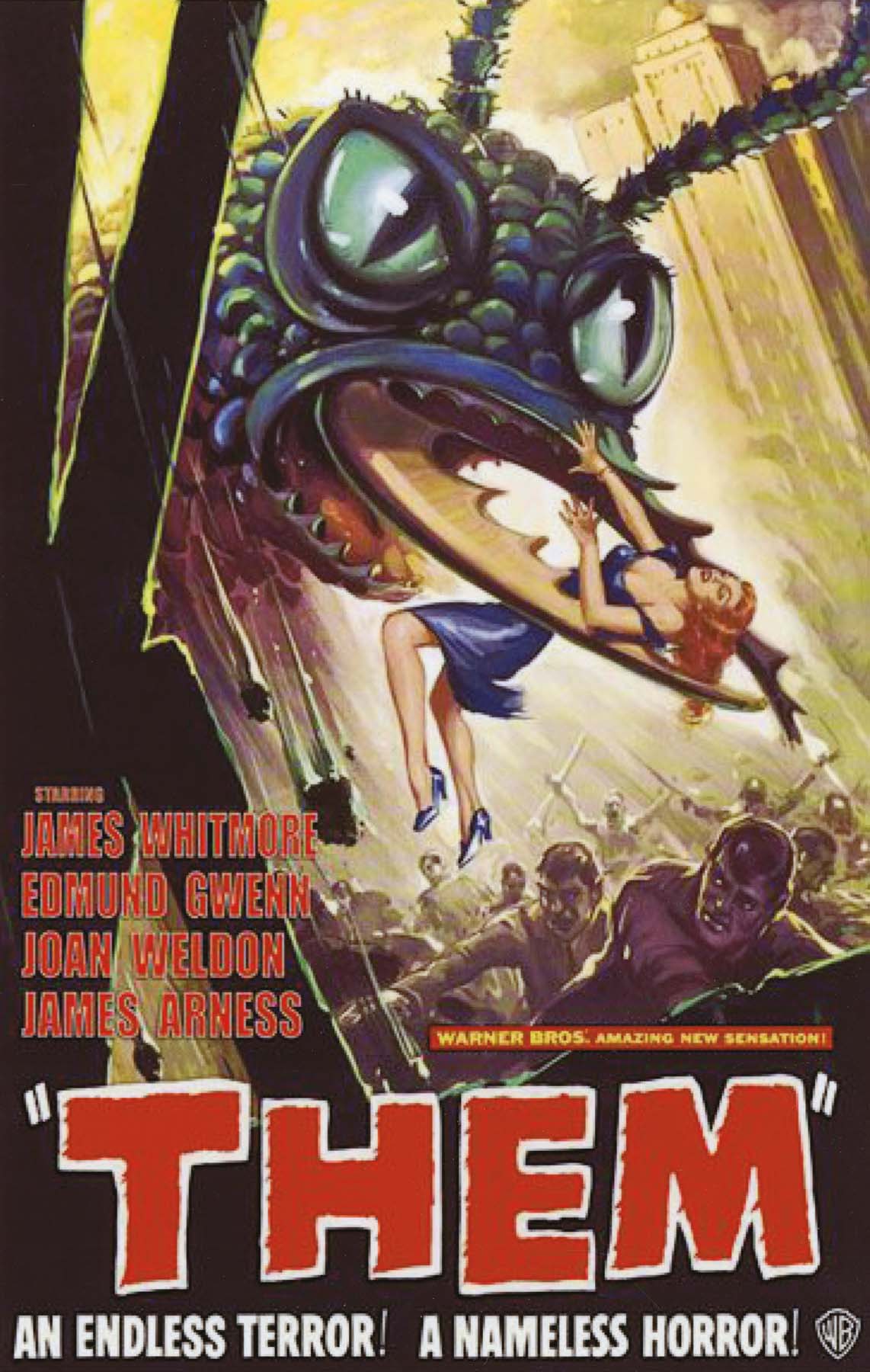
Original one-sheet poster
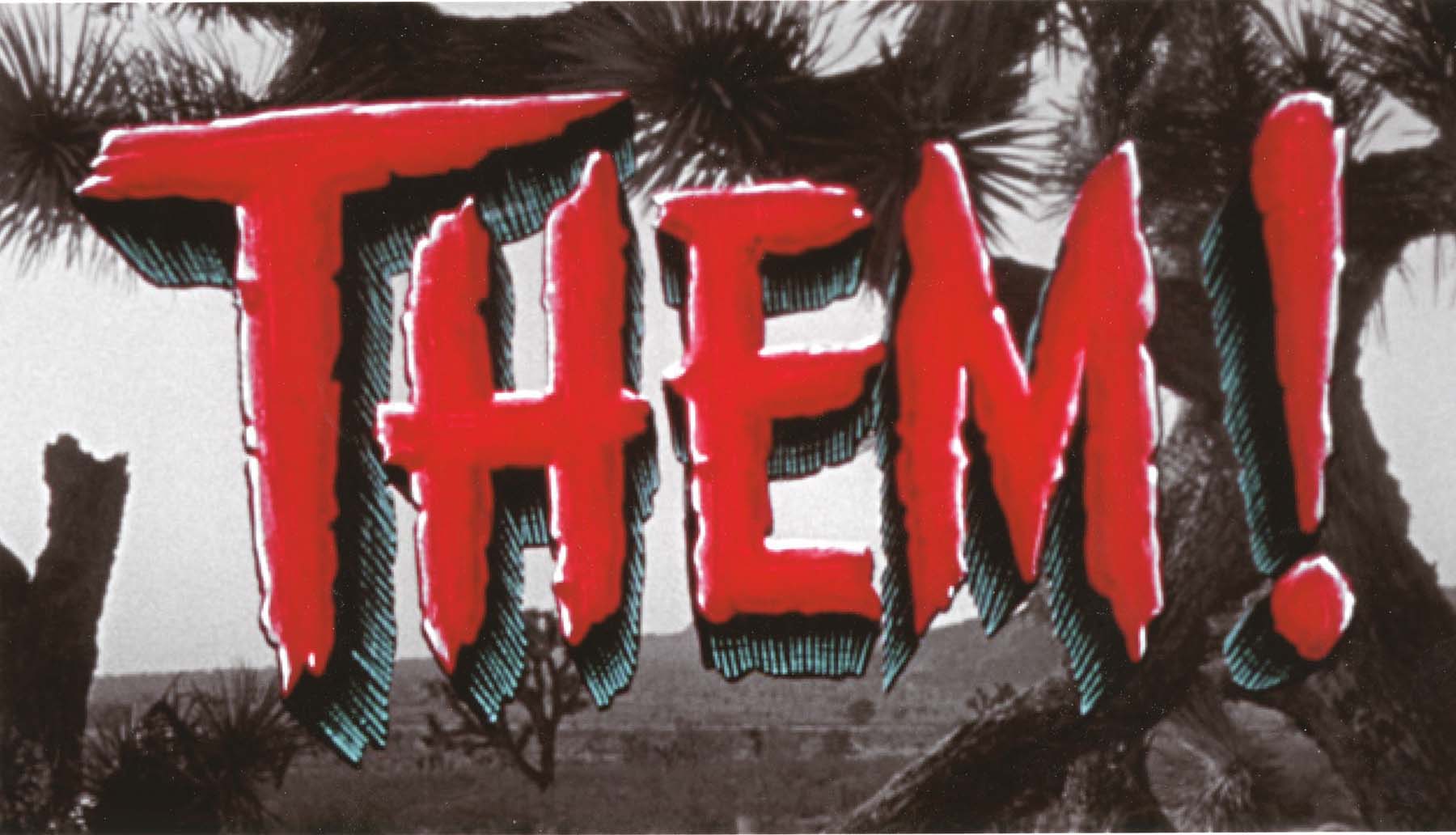
Main title frame enlargement with color effect
The plan for 3-D was the first cost-cutting casualty, followed by color, then plans for widescreen black and white. The last remnant of the film’s original, eye-popping ambition was its main title card, on which “THEM!” was emblazoned in vivid red and blue. The color frames had to be manually spliced into each show print of the first theatrical release. Later prints reverted to black and white, but the color effect was finally restored with the first home video release.
Them! was the inaugural event in a 1950s American growth industry: the giant atomic monster movie. The honor is sometimes mistakenly bestowed on the Japanese Gojira, also produced in 1954, only released domestically in a revised 1956 version called Godzilla, King of the Monsters! Godzilla, however, was never an atomic monster per se, but instead an ancient, dormant creature awakened (and angered) by the atomic attacks on Hiroshima and Nagasaki.
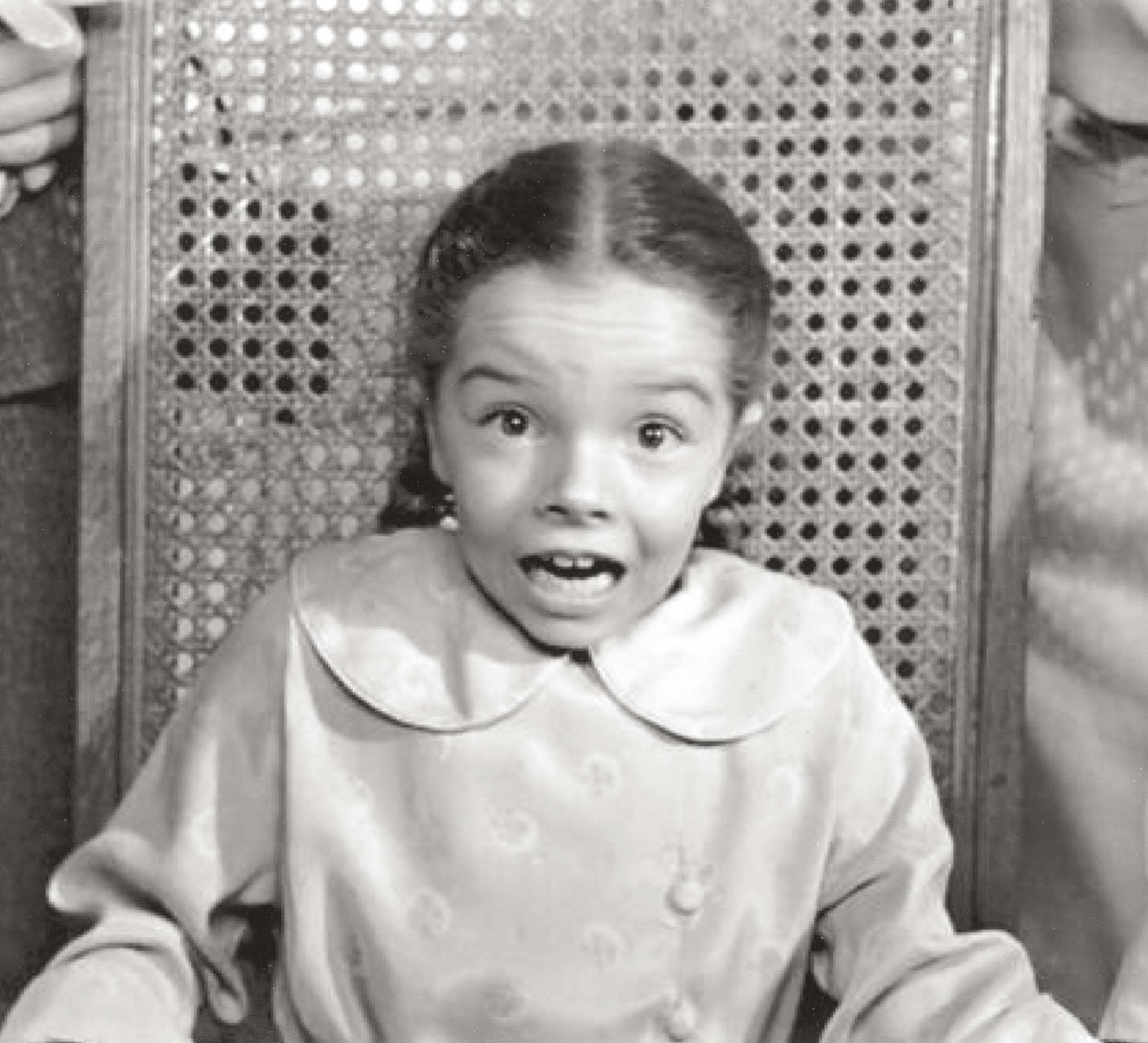
Sandy Descher as the traumatized survivor of an ant attack
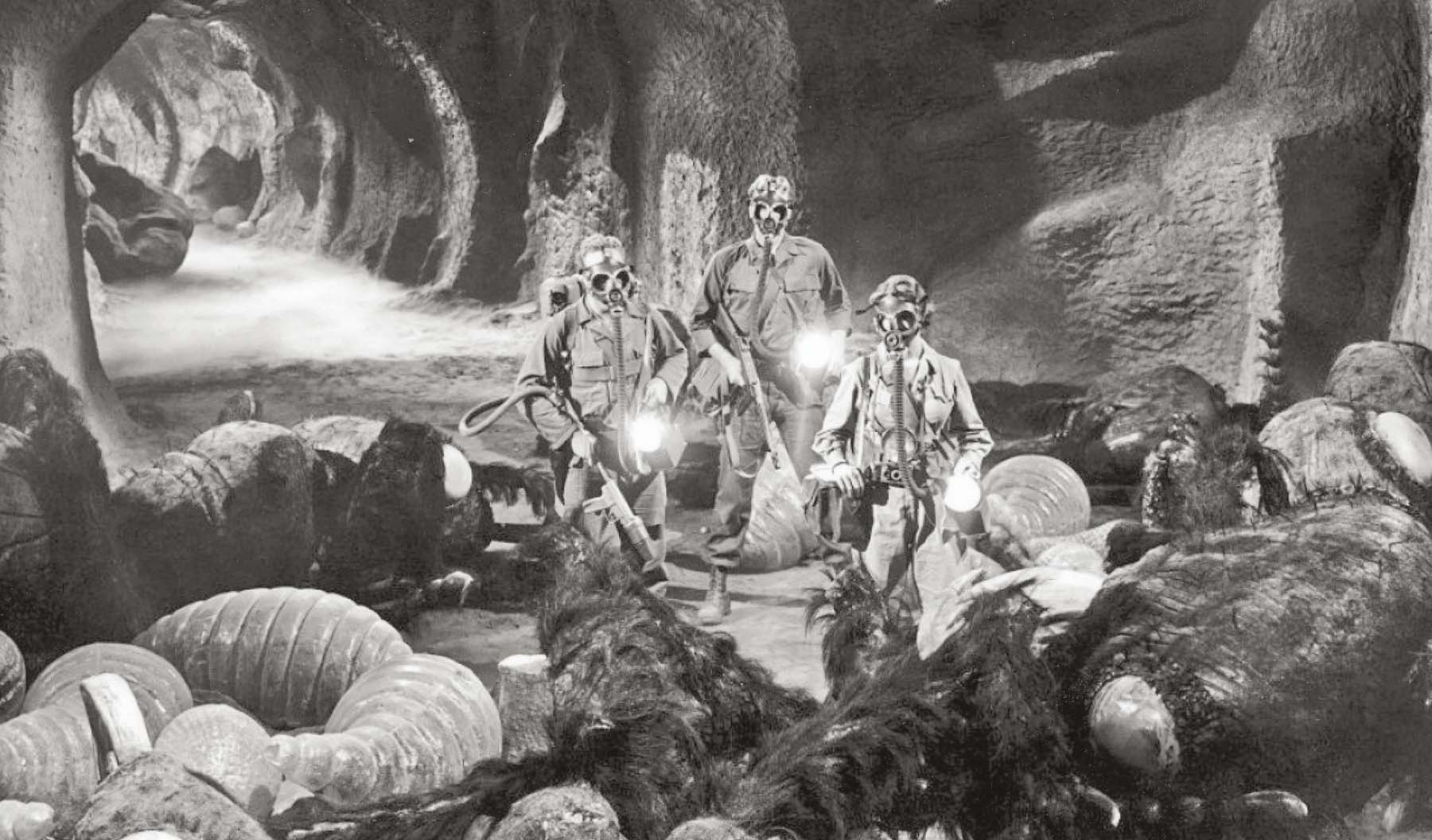
Discovery of the main nest
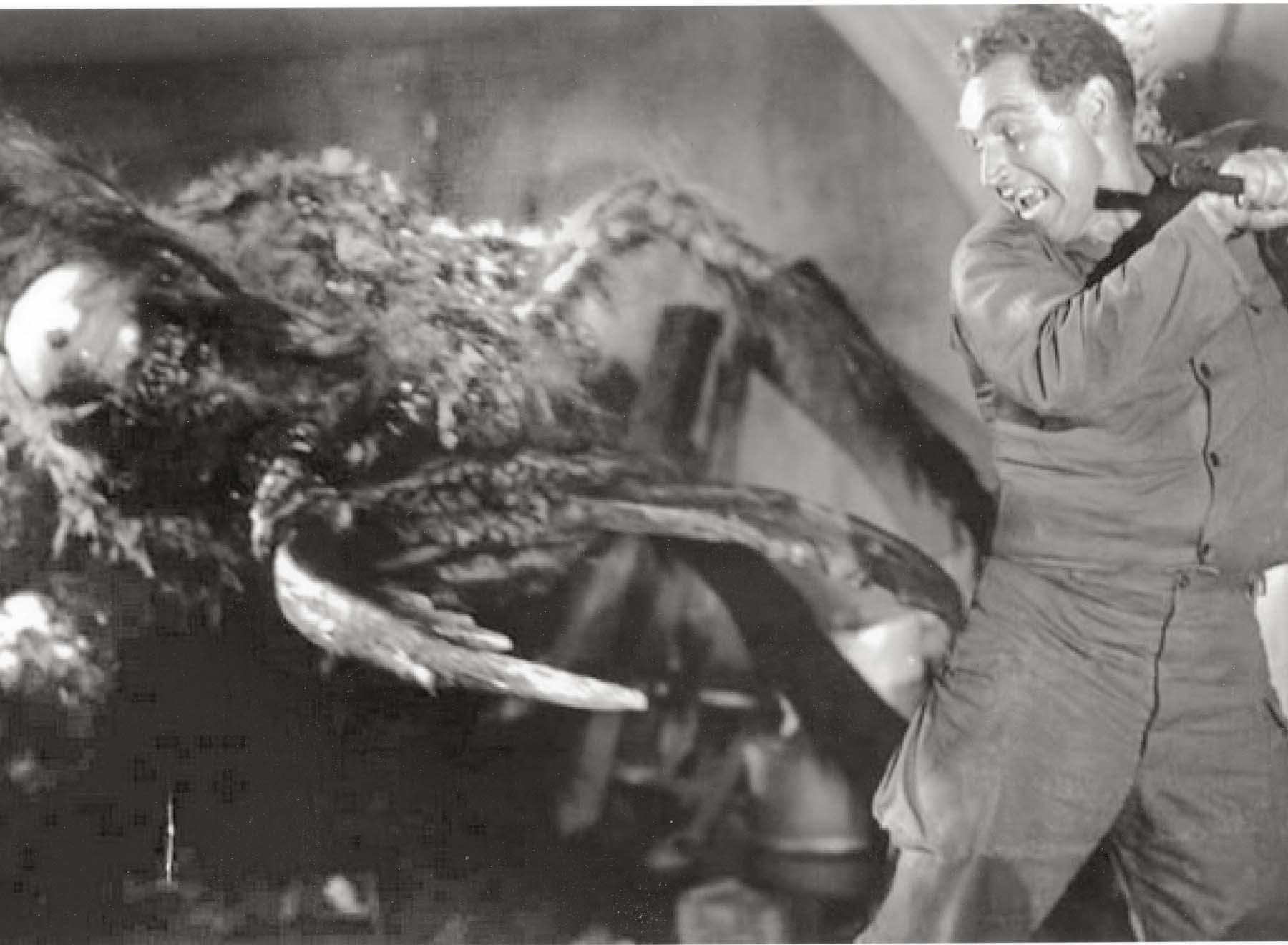
James Whitmore, trapped in a drainage tunnel, struggles to escape.
The dangerous effects of radioactive fallout had, by the early fifties, permeated popular consciousness. There were no fanciful examples of giantism connected to atomic energy, but the use of X-ray and gamma rays was successful in creating marigolds and snapdragons with enormous flowers in the 1940s and 1950s. Of course, the really big elephant in midcentury America was the looming anxiety about the nuclear arms race and possible apocalyptic destruction. But the fear was far more easily processed in a roundabout way through substitute confrontations with giant ants, spiders, praying mantises, and fifty-foot women. Notable atomic-mutation pictures of the 1950s included Tarantula (1955), The Black Scorpion (1957), The Deadly Mantis (1957), Beginning of the End (1957), The Cyclops (1957), and The Amazing Colossal Man (1957).
If you enjoyed Them! (1954), you might also like:
EARTH VS. THE SPIDER
AMERICAN INTERNATIONAL, 1958
